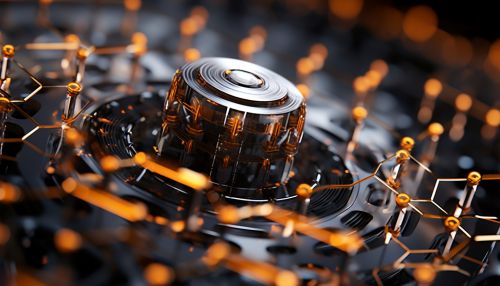The Role of Nanotechnology in Clean Energy Generation
Introduction
Nanotechnology, the manipulation of matter on an atomic, molecular, and supramolecular scale, has emerged as a powerful tool in the field of clean energy generation. This article explores the role of nanotechnology in various aspects of clean energy generation, including solar energy, wind energy, and energy storage.


Nanotechnology and Solar Energy
Nanotechnology plays a significant role in enhancing the efficiency and cost-effectiveness of solar energy systems. The use of nanomaterials in solar cells can increase their light absorption capacity, allowing them to produce more electricity from the same amount of sunlight.
Nanoparticles in Solar Cells
One of the primary ways nanotechnology is applied in solar energy is through the use of nanoparticles in solar cells. These particles, often made of materials like silicon, titanium dioxide, or quantum dots, can absorb and convert sunlight into electricity more efficiently than traditional materials.
Nanostructured Solar Cells
In addition to nanoparticles, nanostructured solar cells are another application of nanotechnology in solar energy. These cells use nanostructures to trap light and increase the amount of energy that can be absorbed. This can significantly improve the efficiency of solar cells, making them a more viable option for clean energy generation.
Nanotechnology and Wind Energy
While less common than its applications in solar energy, nanotechnology also has potential in the field of wind energy. Nanomaterials can be used to create stronger, lighter, and more durable wind turbine blades, which can increase the efficiency and lifespan of wind turbines.
Nanocomposites in Wind Turbine Blades
One of the primary ways nanotechnology is used in wind energy is through the use of nanocomposites in wind turbine blades. These composites, made of materials like carbon nanotubes and nanoclay, can significantly enhance the strength and durability of turbine blades, allowing them to withstand higher wind speeds and generate more energy.
Nanotechnology and Energy Storage
Nanotechnology also plays a crucial role in energy storage, a key component of any renewable energy system. Nanomaterials can enhance the performance of batteries and supercapacitors, making them more efficient and longer-lasting.
Nanomaterials in Batteries
Nanomaterials, such as lithium iron phosphate and graphene, can significantly improve the performance of batteries. They can increase the energy density of batteries, allowing them to store more energy in a smaller space. This can be particularly useful in applications like electric vehicles, where space and weight are critical considerations.
Nanomaterials in Supercapacitors
In addition to batteries, nanomaterials can also enhance the performance of supercapacitors, a type of energy storage device that can charge and discharge much faster than traditional batteries. Nanomaterials like carbon nanotubes and graphene can increase the energy density and power density of supercapacitors, making them a promising option for fast-charging applications.
Conclusion
Nanotechnology has the potential to significantly enhance the efficiency and effectiveness of clean energy generation. From solar cells and wind turbines to batteries and supercapacitors, nanomaterials and nanostructures can improve the performance of these systems, making them more viable options for a sustainable future.
